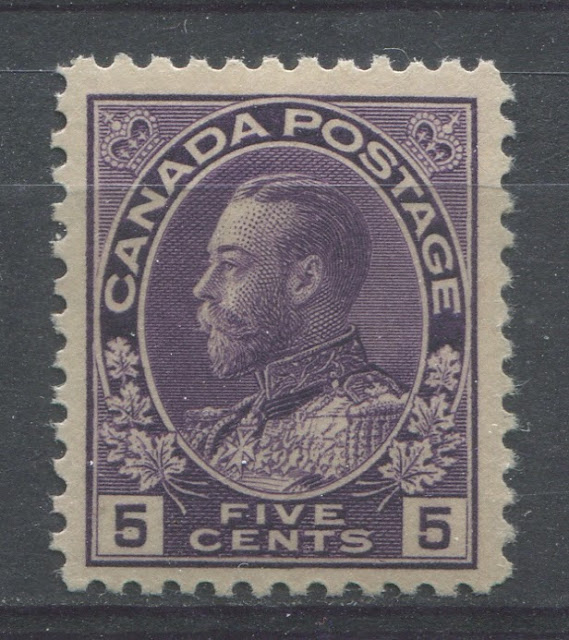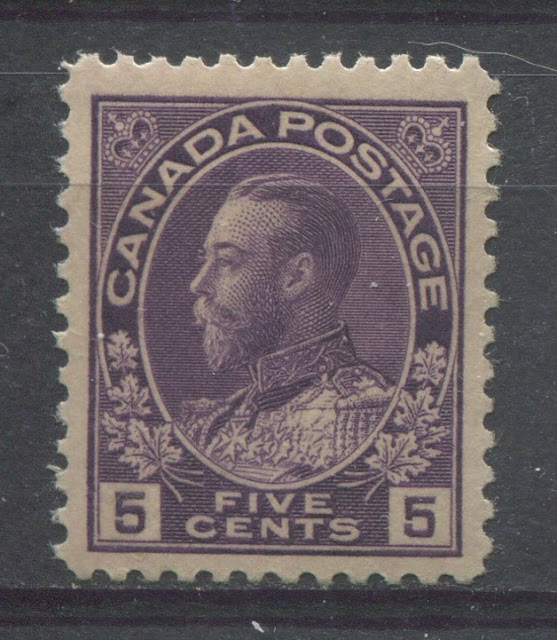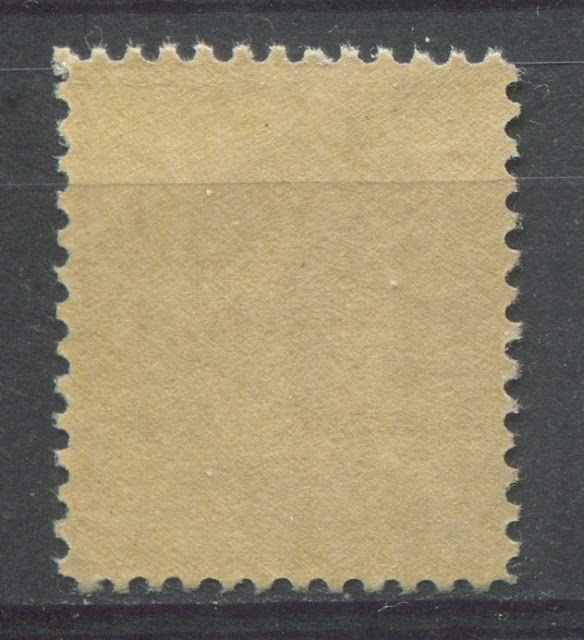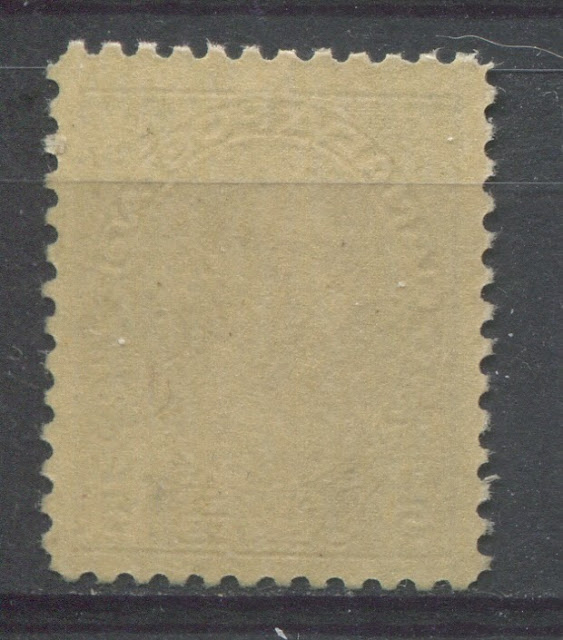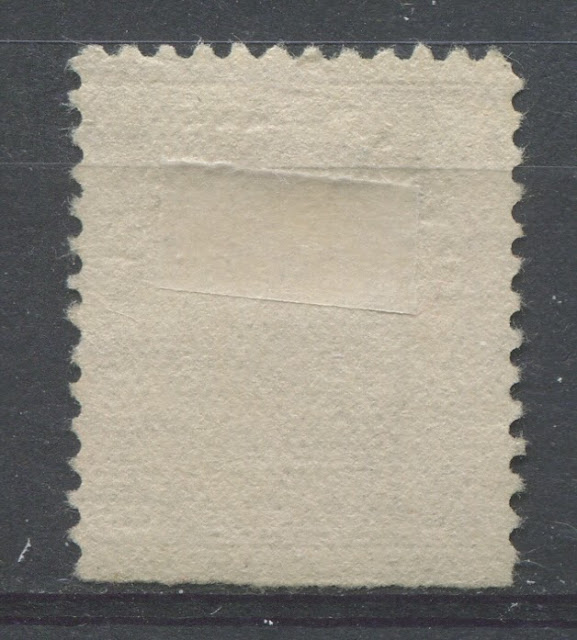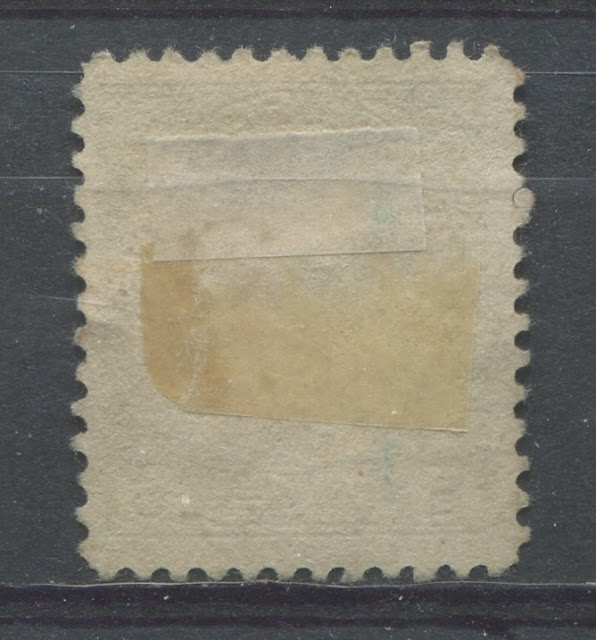Overview
This aspect of the series is a source of confusion for the beginner - especially when they only have a few stamps from the series and are trying to figure out which printings are which. However, I will show you a series of tests you can employ that will help you decide how to properly classify your stamps.
First it helps to know which stamps exist only as wet printings, and which exist only as dry printings. Studying these and applying my tests to them will help you become comfortable with the reliability of the tests and will help you when the time comes to applying the various tests.
The following values of the set exist only as wet printings:
- The 1c green
- The 2c carmine
- The 5c dark blue
- The 7c yellow ochre
- The 10c plum
- The 1c and 2c perf. 8 horizontal coils
- All the perf 12 horizontal coils
- The 1c green and 2c carmine perf. 8 vertical coils
The following values exist only as dry printings:
- The 8c blue
- The 10c bistre brown
All the others exist both wet and dry.
Test #1 - Appearance of Engraving and Width (or Height)
The above stamp is a wet printing. Hopefully it is visible from a comparison of this scan and the one below that the printing lines of this stamp are not raised, being smooth to the touch. Also, if you look at the upper right corner, you can see that the horizontal shading lines stop abruptly and then there is the vertical white line before the outer vertical frameline. On most wet printings, where the stamps were also printed using the dry method, the horizontal shading lines will end abruptly like this with no vertical line enclosing them. the shading lines will appear like this. There are some dry printings of the 20c olive green that appear this way, but in general, if you see upper right corners like this, chances are you have a wet printing.
Also, many of the wet printings will have framelines that show whiskers of colour and uneven slubs protruding from them as though the ink has splashed during printing. This never occurs on the dry printings.
On most wet printings, the width is 17.5 mm. For the 1c green and 2c booklet stamps, the normal printings are 17.75 mm wide and 21.5 mm tall, and the squat versions are 18 mm wide and 21 mm tall.
The above stamp is a dry printing. On these printings the impressions are sharper and the lines appear raised. Also, with the exception of a one printing of the 20c olive green, these stamps almost always have an extra vertical line added in the upper right corner where the horizontal shading lines end. This is called the "re-drawn" frameline, and it is a characteristic of the later dies that were used to engrave the later plates.
The dry printings are always 1/4 mm wider than the wet ones, being 17.75 mm wide. Although this does not seem like much of a difference, it is obvious if you place a wet and a dry printing end to end like so:
The pair on the top is the dry printing, while the one on the bottom is wet.
I find this to be the best test, when you have a lot of stamps to sort, particularly if the stamps you are sorting are used.
Test #2 - Appearance From the Back - The Gum
This is the back view of the wet printing 5c shown above. As you can see, the gum is smooth in appearance, with no engraving lines from the design being visible. All wet printings have smooth gum like this that is either shiny or satin-like in terms of sheen.
Here is the back view of the dry printing 5c violet. On nearly all mint dry printings, some embossing of the design details will be evident. The most prevalent details will be the portrait oval and the outer framelines. However, there are some dry printings, particularly early printings of the 3c carmine, which do not show much, if any embossing and appear at first to be wet printings. Here the key to correctly classifying them are the width measurements, the general appearance of the engraving and the gum.
The gum of the dry printings is usually a smooth, cream gum, not particularly yellowish, with either a satin sheen on the early dry printings. On the mid-period dry printings, the gum becomes shiny and then on the last printings it becomes somewhat streaky in appearance.
This is the most useful test by far for sorting the mint stamps, but it next to useless for used stamps, which will generally not show embossing.
Test #3 The Appearance of the Paper on Used Stamps
This is a back view of a used wet printing stamp. Most of the wet printing stamps will exhibit a clear vertical mesh pattern like the one above.
Here is a back view of a typical dry printing. Despite the hinge remnants, there is clearly no visible mesh. Occasionally you will find fine vertical mesh on some dry printings, so this is not a foolproof test, but it will help you narrow down the classification.
Combining The Tests - A Sorting Algorithm
Step 1: separate the stamps that can only exist as wet and those that can only exist as dry as detailed above.Step 2: separate the mint and used stamps.
Step 3: look at the gum - smooth gum are almost certainly wet, while embossed are always dry.
Step 4: look through the smooth gums for 3c carmine sheet stamps. These are always dry printings. Any remaining smooth gum stamps are wet printings.
Step 5: for the used stamps, look for re-drawn framelines in the upper right corner. Any such stamps are always dry.
Step 6: for any remaining used stamps check the appearance of the paper. Sort them into mesh and no-mesh piles. The no-mesh piles are likely dry printings.
Step 7: for the pile of remaining used stamps with mesh, measure the width. If they are 17.75 mm, they are dry printings. If you don't want to measure them, then line them up against a known dry printing like an 8c blue or 10c bistre brown. If they are narrower, they are wet printings. Use this method to double check any you are not sure of that you identified in the above 6 steps.
The above steps should enable you to get it right practically every time.


